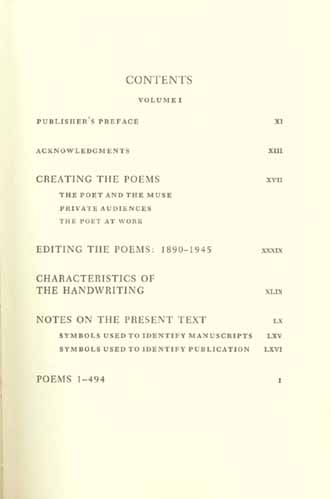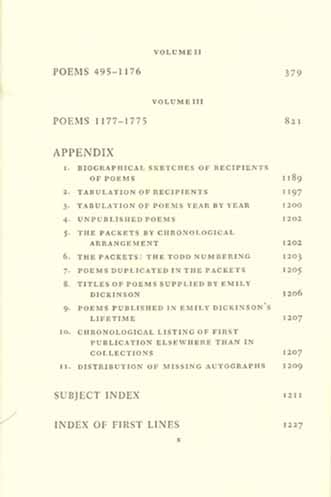



|
|
xi
|
|
|
|
xii
|
|
|
|
xiv
|
|
THE POET AND THE MUSE
|
|
xvii
|
|
|
|
xix
|
|
|
|
xx
|
|
|
xxi
|
|
|
xxii |
|
|
|
xxiv |
|
PRIVATE AUDIENCES
|
|
xxv
|
|
|
|
xxvi
|
|
|
|
xxviii |
|
|
|
xxix
|
|
|
|
|
|
|
xxxi
|
|
|
xxxii |
|
|
|
xxxvi
|
|
|
|
xxxvii |
|
|
|
|
|
EDITING THE POEMS 1890-1945
|
|
xxxix |
|
|
|
xl
|
|
|
xli |
|
|
xlii
|
|
|
|
xliii
|
|
|
|
xliv
|
|
|
|
xlv |
|
|
|
xlvi
|
|
|
|
xlvii |
|
INTRODUCTION
|
|
|
[At
this point, Johnson inserts the following images that are not
included in this transcription: 49,80,324,215,449,668,907,988,1067,1114,1156,1209,1302,1353,1416, |
|
CHARACTERISTICS OF THE
|
xlix
|
|
INTRODUCTION
|
l
|
|
CHARACTERISTICS OF THE HANDWRITING
|
li
|
|
INTRODUCTION
|
lii
|
|
INTRODUCTION
|
liv
|
|
CHARACTERISTICS OF THE HANDWRITING
|
lv
|
|
INTRODUCTION
|
lvi
|
|
CHARACTERISTICS OF THE HANDWRITING
|
lvii
|
|
INTRODUCTION
|
|
|
CHARACTERISTICS OF THE HANDWRITING
|
|
|
NOTES ON THE PRESENT TEXT
|
lx
|
|
INTRODUCTION
|
lxiv
|
|
NOTES ON THE PRESENT TEXT
|
|